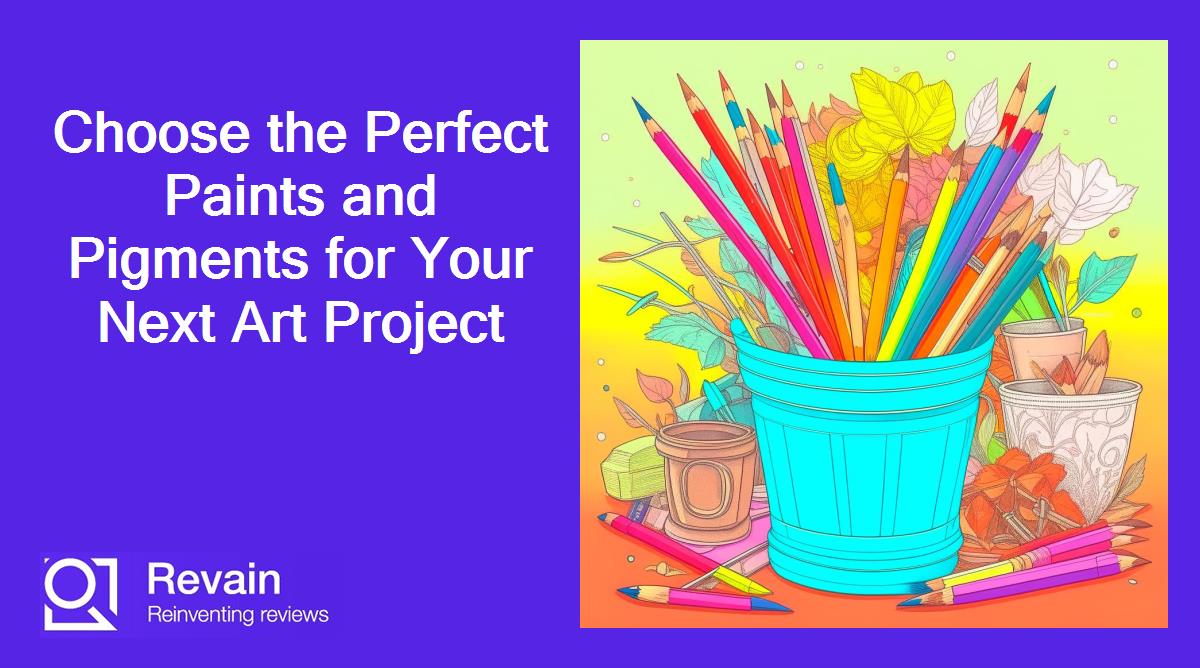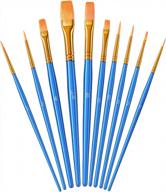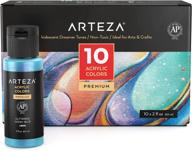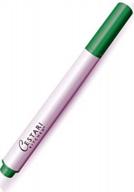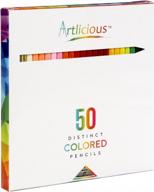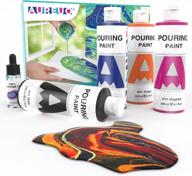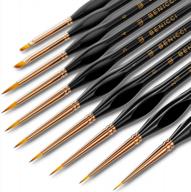Top products in 🎨 Painting
Choosing the Right Paints for Your Project
When starting a new painting project, one of the most important decisions is which type of paint to use. With so many options available, it can be tricky to determine which paints are best suited for your needs.
Acrylic vs. Oil Paints
Two of the most popular paint mediums for artists are acrylic and oil paints, each with their own sets of pros and cons:
- Acrylic paints are water-soluble, quick-drying paints. They are versatile to use and clean up easily with water. However, they can lack the rich, buttery texture of oil paints.
- Oil paints are slower drying and allow the artist to blend colors directly on the canvas. But they require solvents to thin and clean them up.
When choosing between acrylic and oil paints, consider your specific project needs. Acrylics work well for techniques requiring crisp, defined brushstrokes. Oils allow more time for blending and reworking areas of the painting.
Watercolor Paints
Watercolor paints are pigments suspended in a water-soluble base. They are applied using a wet-on-wet technique on thick paper or canvas specifically treated for watercolors. Watercolors produce a transparent, luminous effect well-suited for landscapes or experimentation.
Similar products
Paint Quality and Pigments
Student to professional grade paints use different quality pigments, which affect the vibrancy and permanence of the colors. Student grade paints use lower cost pigments and often have less saturated colors. Professional grades use pure, high quality pigments for intense, long-lasting color.
The permanence of a paint refers to how resistant it is to fading over time. Look for paints rated with an "Excellent" or "Good" lightfastness.
Another interesting products
Brushes and Other Painting Tools
The variety of brushes available can seem endless, but they mainly fall into these categories:
- Bristle - best for oil paints, good for holding thick paint
- Sable - made from natural hair, good for watercolors
- Synthetic - nylon or polyester, budget-friendly option
Start with a basic assortment of round, flat, and filbert bristle brushes. Add different sizes for variation in stroke style. Other useful painting tools include palette knives, paint scrapers, sponges, and paint mediums.
Cleaning and Storing Paints
Properly cleaning brushes and storing leftover paint between painting sessions helps increase the lifespan of your materials.
- For oil paints, clean brushes with paint thinner or brush cleaner. Store oil paints in a sealed container, limiting air exposure.
- Clean acrylic brushes with soap and water. Store acrylics tightly sealed to prevent drying out.
- Rinse watercolor brushes thoroughly in water. Dry flat with the brush hairs facing down.
With the right selection of paints and tools, you'll be set up for painting success on your next artistic creation.
Acrylic vs. Oil Paints
When starting a new painting project, choosing between acrylic and oil paints is an important decision. While both offer vibrant colors and versatility, there are key differences that impact their usage.
Drying Time
One of the biggest contrasts is drying time. Acrylic paints are water-based and dry quickly, within minutes or up to an hour. The fast drying time allows artists to add multiple layers of paint rapidly.
Oil paints are slower drying, taking up to a week or longer fully cure. This extended working time lets painters blend and manipulate the paint directly on the canvas before it dries.
Texture and Brushstrokes
The texture and brushstroke effects also vary between the two paint types:
- Acrylic paints tend to look flat and have a matte finish. Brushstrokes hold their shape well.
- Oil paints mix smoothly and have a rich, buttery texture. Brushstrokes blend seamlessly.
For example, an impasto technique with thick textural brushstrokes is easier to achieve with flexible oil paints versus stiff acrylics.
Color and Pigments
Oil paints use higher concentrations of pigment, producing deep intense hues. The colors stay true even when blended with oil mediums or other colors.
Acrylics have a more transparent, faded look straight from the tube. They can lack some vibrancy until properly mixed with acrylic mediums or gels to reach the desired consistency.
Cleanup and Storage
Acrylic paints clean up with soap and water. Dried acrylic paint is water resistant, so brushes and surfaces need cleaning before the paint dries.
Oil paints require chemical solvents like turpentine or mineral spirits to thin and clean brushes. Leftover oil paint needs proper storage in sealed containers to prevent oxidation.
Longevity and Preservation
When cured, oil paints are highly resistant over centuries. The pigments maintain brilliance and the paint flexes with the canvas surface.
Acrylic paint becomes brittle over time. The colors tend to shift or fade more rapidly compared to preserved oil paintings. Varnishing is recommended to protect acrylic surfaces.
In summary, acrylics and oils each have characteristics suitable for different painting techniques and artistic goals. Weigh these key differences when selecting the best paint for your upcoming projects.
Watercolor Paints
For artists looking for transparent, lightweight paints that encourage spontaneity, watercolors are a great option. Watercolor paints have unique qualities that produce luminous washes of color.
Paint Composition
Watercolor paint consists of pure pigment suspended in a water-soluble gum arabic binder. When mixed with water, the binder dissolves and the pigment readily disperses.
Painting Techniques
Watercolors are applied using a wet-on-wet technique. The paper is pre-wetted before applying a diluted wash of paint. Colors blend seamlessly on the damp surface.
Once dry, watercolor paint is permanent and water resistant. Layers must be built up while the previous layer is still damp.
Color Properties
Watercolors appear transparent and luminous compared to heavier opaque paints. Mixing colors produces intermediate hues as the pigments don't overwhelm one another.
- Staining colors like alizarin crimson tint underlying washes.
- Muddy colors like burnt sienna create granulating textures.
Controlled wet-on-dry techniques intensify colors. Letting lighter edges dry first creates soft gradations.
Recommended Surfaces
Watercolor paper has a texture and sizing ideal for holding pigment at the surface. Cold press paper provides a lightly textured "tooth", while hot press is smooth.
Other surfaces like watercolor canvas, Yupo paper, or specialty boards are also suitable when properly treated and primed.
Masking Techniques
Masking fluid preserves white areas when painting around them. Once dried, the rubbery film peels away to reveal untouched paper.
Wax resist techniques like batik use wax to repel and control watery paint. The wax is removed after painting by ironing between sheets of paper.
In summary, watercolors are ideal for exploiting the creative effects of transparent pigments and water. Mastering their unique handling allows fluid, expressive results.
Paint Quality and Pigments
Understanding paint quality and pigments allows artists to select the best materials for their specific needs. Student grade versus professional paints differ in pigment concentration, lightfastness, and permanence.
Student Grade vs. Professional Grade
Student grade paints use lower quality pigments with added fillers and stabilizers. They produce adequate color for beginners on a budget.
Professional paints use pure, high quality pigments for intense, permanent color. The higher pigment load comes at a higher cost, but provides archival longevity.
| Student Grade | Professional Grade |
|
|
Lightfastness
Lightfastness indicates how resistant a pigment is to fading over time when exposed to light. Professional paints use only high lightfastness pigments rated Excellent or Good.
Cadmium and cobalt pigments have excellent lightfastness. Colors like alizarin crimson are less permanent and fade quicker.
Transparency vs. Opacity
Transparent colors let underlayers show through, while opaque colors block and cover. Understanding a color's opacity helps build layered glazes or opaque highlights.
Many earth pigments like burnt sienna are more opaque. Synthetic phthalo blues and greens appear very transparent.
Staining vs. Non-Staining
Staining describes a pigment that irreversibly tints the painting surface, making it difficult to paint over or remove. Staining colors act almost like dyes.
Alizarin crimson and phthalo green are known staining pigments. Titanium white is non-staining and can be lifted off with solvents or water.
Evaluating paint quality helps artists select the right materials for archival work or color characteristics needed in a painting.
How to Use Amazon Prime to Buy Painting Supplies
As an Amazon Prime member, you get access to a wide range of benefits when buying painting materials and art supplies. Taking advantage of Prime's offerings can help you save money and get your items faster.
Free Two-Day Shipping
One of the biggest perks of Prime is free two-day shipping on millions of eligible items. When you need to restock paints or brushes quickly for a project, you can order them with Prime and receive your products rapidly.
Browse for professional quality paints, canvases, easels and other essentials. As long as the item is Prime-eligible, it will arrive within two days at no extra shipping cost.
Prime Member Deals
Look for special Prime-exclusive deals and discounts on select art supplies. These deals allow you to save up to 20% or more on painting products.
You may find sales on paint sets, brush packages, art tool bundles and more. Access to member-only deals can help stretch your painting budget further.
Prime Pantry for Heavy Items
Need to stock up on bulky items like canvases or easels? Use Prime Pantry to have larger painting supplies delivered right to your door.
Prime Pantry offers free shipping on qualifying boxed orders over $35. This allows you to buy multiple heavy items without high shipping fees.
Compare Prices
Don't just settle for the first listing you see. Leverage Prime to shop and compare prices across sellers to find the best deals.
Sort by price low to high and look for discounts or coupons to maximize your savings on top art brands. Getting the lowest price means you can buy more supplies.
By taking advantage of all the Prime membership perks, you can conveniently purchase painting materials for less. Have your supplies delivered fast so you can spend more time creating.
What Are The Different Types Of Painting Styles?
Painting is a diverse art form that encompasses a wide range of styles and mediums. Here are some of the different types of painting styles:
Each style has its unique approach to capturing the artist's vision. Some styles aim to depict subjects in a highly accurate and detailed manner, resembling a photograph, such as Realism. Others, like Impressionism, focus on capturing the essence of a subject through light and color. Abstract art, on the other hand, is characterized by its non-representational nature, often using shapes, colors, and textures to convey emotions and ideas.
What Are The Characteristics Of Renaissance Painting Style?
The Renaissance was a period of great artistic and cultural achievement in Europe, spanning from the 14th to the 16th century. Renaissance painting was characterized by a number of distinct features, including:
These characteristics of Renaissance painting contributed immensely to the state of the world today, and taught us to appreciate the beauty of the world around us.
What Is The Historical Context Of Renaissance Painting Style?
The Renaissance was a period of great social and cultural changes in Europe, spanning from the late 14th to the 16th century. Renaissance painting was characterized by a number of distinct features, including realism, humanism, classicism, naturalism, non-religious topics, and exclusivity. The historical context of Renaissance painting is marked by the emergence of a distinct style in Italy in about AD 1400, which was primarily produced during the 14th, 15th, and 16th centuries in Europe under the combined influences of an increased awareness of nature, a revival of classical learning, and a more individualistic view of man. Renaissance artists were largely concerned with painting realistic scenes, and linear perspective gave them a reliable method to accomplish this realism, which helped make their paintings all the more captivating. The themes that preoccupied painters of the Italian Renaissance were those of both subject matter and execution – what was painted and the style in which it was painted. Renaissance painting differed from the painting of the Late Medieval period in its emphasis upon the close observation of nature, particularly with regards to human anatomy, and the application of scientific principles to the use of perspective and light. The Italian Renaissance art movement has had an impact as profound as any other art movement in history, and its influence can still be seen in contemporary art today.






